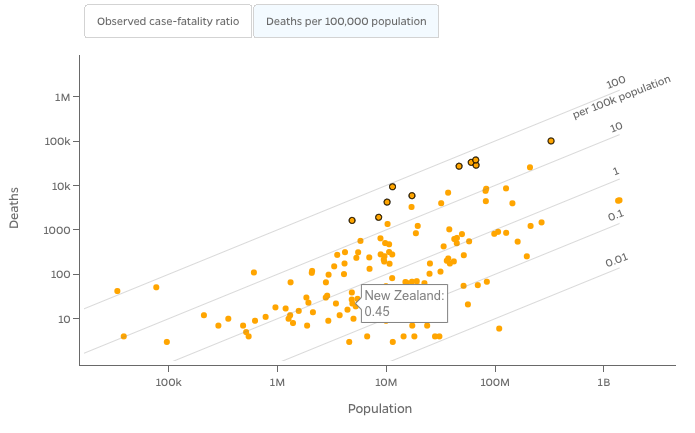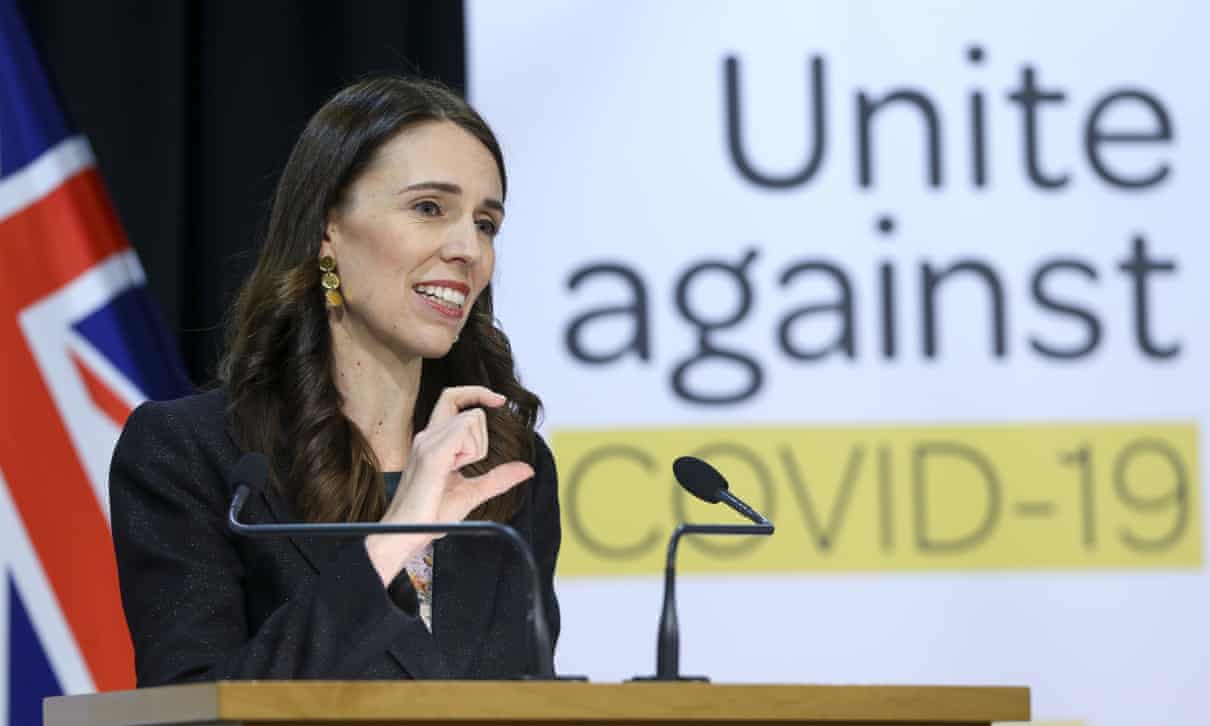2 Countries, 2 Starkly Different Coronavirus Milestones
One is led by a man, who frequently espouses conspiracy theories, makes unsubstantiated claims, and calls the media "fake news", and the other is led by a woman who is using science to fight the COVID-19 pandemic in her country.
As of 28 May, the coronavirus has killed 357,467 people all over the world since the outbreak was first reported in late December 2019
Of which, almost 30% is now in the United States (US) alone with the country becoming the first in the world to lose over 100,000 lives to the pandemic after it reported its first case on 21 January.
The US death toll stands at 102,107, according to real-time statistics website Worldometer.
No other country even comes close. The United Kingdom (UK), placed second with 37,460 deaths, is far behind. The US actually has more deaths than Italy, France, and the UK combined.
However, on a per capita basis, the US ranks ninth in its mortality rate behind countries like Belgium with 9,364 deaths, and Ireland with 1,631 deaths, according to Johns Hopkins University in Maryland.
In contrast to the bleak 'milestone' in the US, New Zealand today celebrated its sixth consecutive day of no new COVID-19 cases
During Wednesday's press conference, New Zealand's Health director-general Dr Ashley Bloomfield revealed that there is nobody in the hospital with COVID-19 after a patient was discharged.
Then earlier today, 28 May, he reported that the cumulative total of cases in New Zealand remains at 1,504 due to no new cases in the last six days. A total of 1,474 have recovered.
"We only have eight remaining cases, considered to be active," he said during Thursday's briefing.
In terms of deaths per 100,000, New Zealand's mortality rate is at 0.45% compared to 30.69% in the US.
The starkly different contrast between the numbers of the two countries and their coronavirus 'milestones' has a lot to do with their individual leaders and the steps they took to fight the pandemic
In the US, President Donald Trump has frequently espoused conspiracy theories about the new virus while making unsubstantiated claims with regards to asking people to try bogus treatments.
For example, back in April, he suggested injecting disinfectant into the body to treat the coronavirus, despite the fact that disinfectants are hazardous substances and can cause death if ingested.
When called out or asked to clarify his statements, he has consistently called the media "fake news".
Back in January, a day after the US reported its first case, he said, "It's one person coming in from China and we have it under control. It's going to be just fine", which he followed in February by claiming that he has done a "pretty good job" as the coronavirus is "very much under control" in the US.
Three months later, the country has lost about the same number of lives in less than half a year than the number of the US servicemen and women killed in Korea, Vietnam, Iraq, and Afghanistan over an aggregated 44 years of fighting, according to an analysis by Jon Sopelin in the BBC today, 28 May.
On the other hand, Jacinda Ardern became New Zealand's most popular Prime Minister in a century due to her COVID-19 response
Ardern's COVID-19 response — which has been described as "open, honest, and effective" — made the country among the most successful in curbing the spread of the coronavirus disease, reported Reuters.
Not just in her own country, Ardern's empathy-focused leadership style has prompted The Atlantic, the venerable magazine, to call her "the Most Effective Leader on the Planet".
While the tag given by The Atlantic may sound exaggerated given that some Asian countries like Taiwan have done better, Ardern's response has certainly stood in contrast to her counterpart in the US.
Unlike Trump, the New Zealand Prime Minister has relied on empathy, science, and reason to fight the COVID-19 pandemic in her country where the first case was reported on 28 February.
Following a rise in cases, her government initiated a four-level alert level system on 21 March. About a month and a half later on 13 May, lockdown restrictions were lifted based on level two.
The 'Alert 2' requires groups to maintain a one-metre gap as part of social distancing rules.
And in an incident that happened on 16 May, Ardern and her partner were turned away at a popular café as it was too full to accommodate them under the guidelines.
A spokesperson from the Prime Minister's office said that waiting at a café is something that anyone can experience during the country's coronavirus restrictions and that "she waits like everyone else".
While sticking to rules should not be a thing a leader gets hailed for, the bar is low considering how frequently politicians and leaders flout them, sending a 'do as I say not as I do' message to the people.
This story is the personal opinion of the writer. You too can submit a story as a SAYS reader by emailing us at [email protected].

